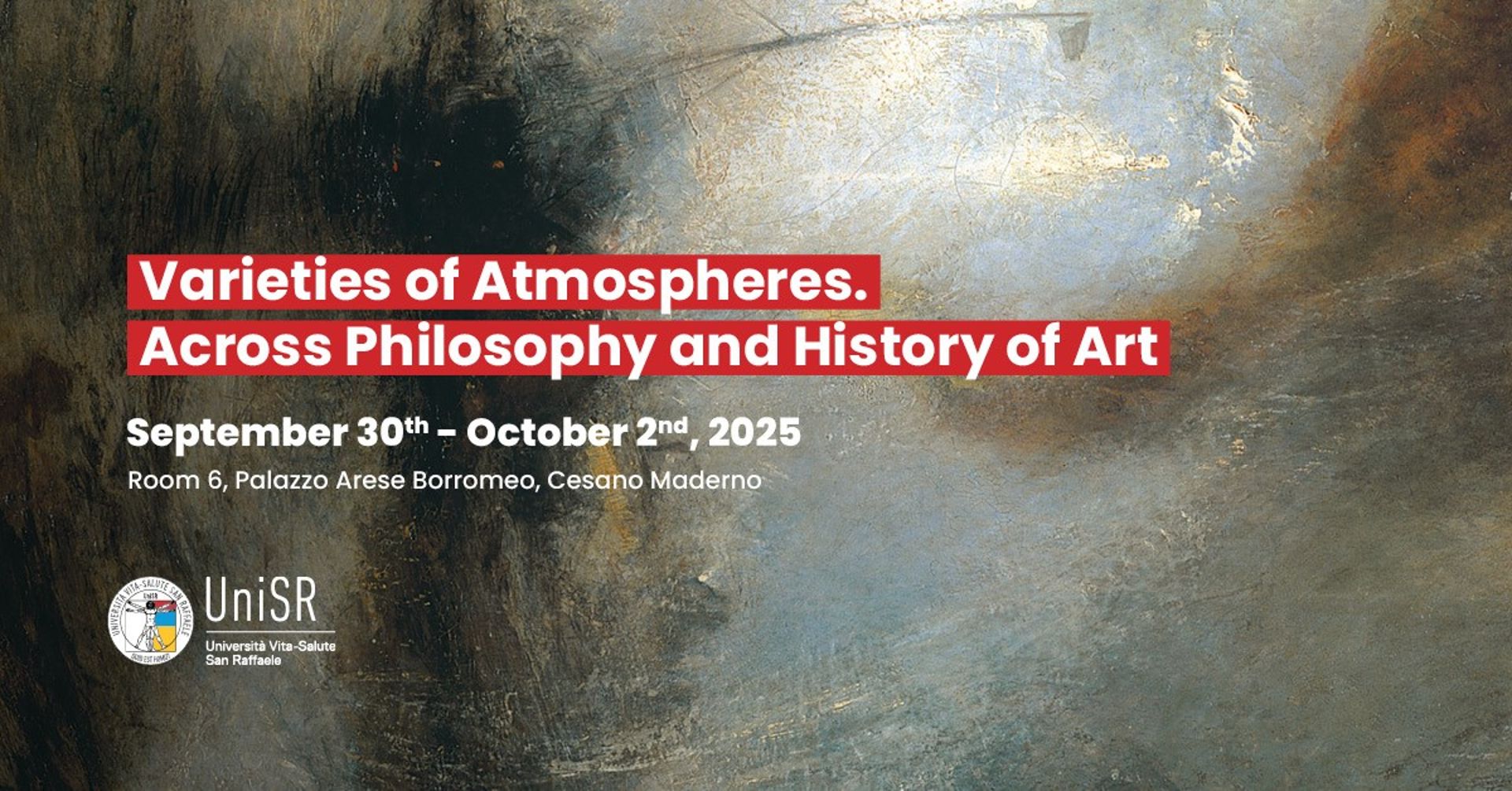San Raffaele School of Philosophy 2025 - SRSP
Varieties of Atmospheres. Across Philosophy and History of Art
San Raffaele School of Philosophy 2025
September 30th – October 2nd, 2025
Vita-Salute San Raffaele University, Milan
Faculty of Philosophy
Palazzo Arese Borromeo – Cesano Maderno

Accepted papers will be published in a special issue of Phenomenology and Mind
What is an atmosphere? How do we perceive atmospheres? Do places have atmospheres? How about objects and events? Which relation exists between emotions and atmospheres? These are highly-debated and multifaceted questions that need to be investigated from different but interrelated perspectives. In this School we aim at exploring these issues from a variety of philosophical points of view and from the perspective of arts and history of art.
First, in Phenomenology (Section 1), we seek to explore how atmospheres are experienced and what are their structural features. We aim to investigate whether atmospheres should be conceived in analogy with moods and Stimmungen or, rather, with expressive properties, environmental affordances, and tertiary qualities. Such a phenomenological investigation will also focus on the kind of experiences responsible for atmosphere detection, as well as on the impact atmospheres can have on one’s personal life and identity. Moreover, in this perspective, atmospheres are to be investigated in relation to the issue of sociality and its role in favoring or hindering the constitution of peculiar atmospheres.
Second, in Philosophy of Perception (Section 2), we aim to address the question of the nature of the act by which atmospheres are apprehended and, in particular, to consider whether this apprehension can be characterised as perceptual instead of, for example, affective, cognitive, or sui generis. The thesis of the perceivability of atmospheres is related to the recent debate on the scope of perceivable properties: do we only perceive objects’ low-level properties, such as colour, shape, or loudness, or do we also perceive high-level properties? The hypothesis that atmospheres are high-level perceivable properties raises a number of questions about the role played in their apprehension not only by the external senses (the canonical five sensory modalities) but also by the internal senses (proprioception, interoception), the role of corporeality, and of dedicated attentional mechanisms such as the mobilisation of a holistic form of attention. Another question related to the perceivability of atmospheres is whether these experiences are subject to the doxastic and/or emotive influence in the form of cognitive penetration and/or emotive penetration.
Third, from the perspective of Ethics and Political Philosophy (Section 3 and 4), we wish to examine how social contexts shape social, inter- or trans-subjective, communal or collective atmospheres, particularly exploring the interplay between individual and shared emotions, political emotions such as fear, rage, trust and hope and more complex affects. This involves unravelling the complexities of mimetic mechanisms such as emulation, contagion, or vice-versa, repulsion, resistance, and overall (dis)-adaptation in the face of potential transformative action to create a more equitable and inclusive society. Furthermore, the externalization of emotions through atmospheres presents new challenges regarding their impact on moral behavior and, consequently, on the relationship the agent can (and should) develop with the emotional sphere, including the one shared with other agents.
Fourth, in Philosophy of Language (Section 5), we explore how language and communication shape and perpetuate shared atmospheres that affect our cognition in a variety of ways. Recent works in the social philosophy of language have especially focused on how our words can contribute to spreading prejudice and bigoted attitudes. This is not limited to hate speech, but includes all sorts of contributions that invite to take - or even impose - a prejudiced perspective.
Finally, in Philosophy and History of Art (Section 6), we would like to examine the role that contemporary art plays in envisioning, building, experiencing atmospheres, fostering models to show, interpret and deconstruct socio-cultural norms, while performing and reshaping perception of built as well as natural spaces. The notion of atmosphere has been a pivotal concern in artistic experimentation, evolving across movements and media from the Baroque’s illusionistic spaces to contemporary installation, multimedia, and digital art. We invite contributions that examine how artistic research has shaped and transformed our understanding of atmospheres, exploring their capacity to alter perception, mediate experience, and challenge cultural paradigms. We are particularly interested in interdisciplinary proposals, aimed at connecting the philosophical and art historical discourse, and related to contemporary case studies and experiences.
